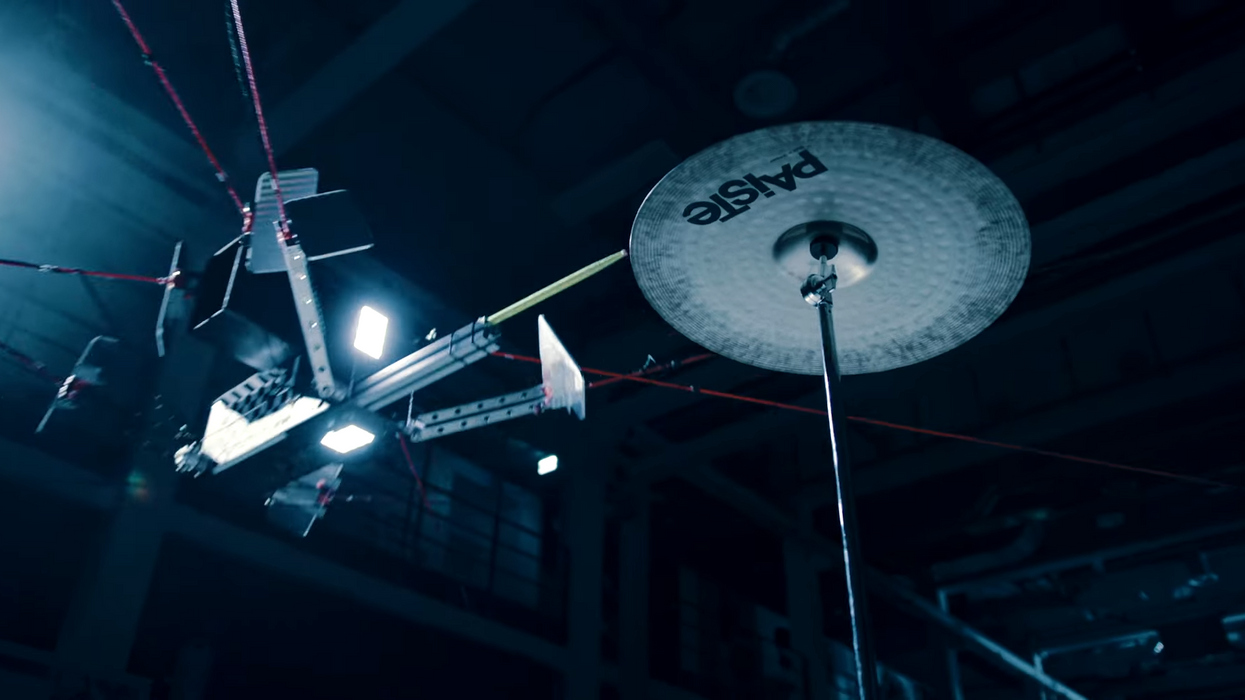Video Friday: Robots at Night

Video Friday is your weekly selection of awesome robotics videos, collected by your friends at IEEE Spectrum robotics. We also post a weekly calendar of upcoming robotics events for the next few months. Please send us your events for inclusion.
Enjoy today's videos!
I don't know what your robots do at night, but at Fraunhofer, this is what they get up to.
[ Fraunhofer IPA ]
This choreorobotics dance is part atavistic ceremony, part celestial conjuring, and part ecstatic romping. It features three human dancers and two Boston Dynamics Spot robots with original music, choreography, and video. It was the first robot-human dance performed at any Smithsonian building in its history and premiered on July 6th, 2022. This work was created as the culmination of Catie Cuan's Futurist-in-Residence appointment at the Smithsonian Arts and Industries Building.
[ Catie Cuan ]
Several soft-bodied crawling animals in nature such as inchworms, caterpillars, etc., have remarkable locomotion abilities for complex navigation across a variety of substrates....We have developed a bio-inspired soft robotic model (driven by only a single source of pressure) that unveils the fundamental aspects of frictional anisotropic locomotion in crawling animals. This breakthrough is interesting from an animal biomechanics point of view and crucial for the development of inspection and exploration robots.
A paper on this work, titled Frictional Anisotropic Locomotion and Adaptive Neural Control for a Soft Crawling Robot," has been published in Soft Robotics.
[ VISTEC ]
Thanks, Poramate!
Quadrotors are deployed to more and more applications nowadays. Yet quadrotors' flight performance is subject to various uncertainties and disturbances, e.g., ground effect, slosh payload, damaged propeller, downwash, and sudden weight change, just to name a few. The researchers from the Advanced Controls Research Laboratory at UIUC bring up L1Quad: an L1 adaptive augmentation for compensating for the uncertainties and disturbances experienced by the quadrotor. The video below shows the superior performance of L1Quad in various challenging scenarios without retuning the controller parameters case by case.
[ Illinois ]
Thanks, Sheng!
These robots can handle my muffins anytime.
[ Fanuc ]
This is maybe the most specific gripper I've ever seen.
[ PRISMA Lab ]
A little weird that this video from MIT is titled Behind MIT's Robot Dog" while featuring a Unitree robot dog rather than a Mini Cheetah.
[ MIT CSAIL ]
When you spend years training a system for the full gamut of driving scenarios, unexpected situations become mere possibilities. See how we consistently put the Waymo Driver to the test in our closed-course facilities, ensuring we've built a Driver that's ready for anything.
[ Waymo ]
Robots attend valves
Opening and closing with grace
Steady and precise
[ Sanctuary AI ]
REInvest Robotics in conversation with Brian Gerkey, cofounder and now former CEO of Open Robotics on his wishlist for robotics.
This Stanford Seminar is from Aaron Edsinger of Hello Robot, on humanizing robot design.
We are at the beginning of a transformation where robots and humans cohabitate and collaborate in everyday life. From caring for older adults to supporting workers in service industries, collaborative robots hold incredible potential to improve the quality of life for millions of people. These robots need to be safe, intuitive, and simple to use. They need to be affordable enough to allow widespread access and adoption. Ultimately, acceptance of these robots in society will require that the human experience is at the center of their design. In this presentation I will highlight some of my work to humanize robot design over the last two decades. This work includes compliant and safe actuation for humanoids, low-cost collaborative robot arms, and assistive mobile manipulators. Our recent work at Hello Robot has been to commercialize a mobile manipulator named Stretch that can assist older adults and people with disabilities. I'll detail the human-centered research and development process behind Stretch and present recent work to allow an individual with quadriplegia to control Stretch for everyday tasks. Finally I'll highlight some of the results by the growing community of researchers working with Stretch.
[ Hello Robot ] via [ Stanford ]